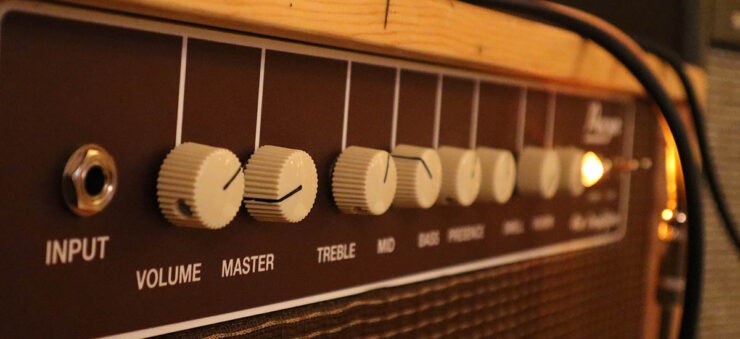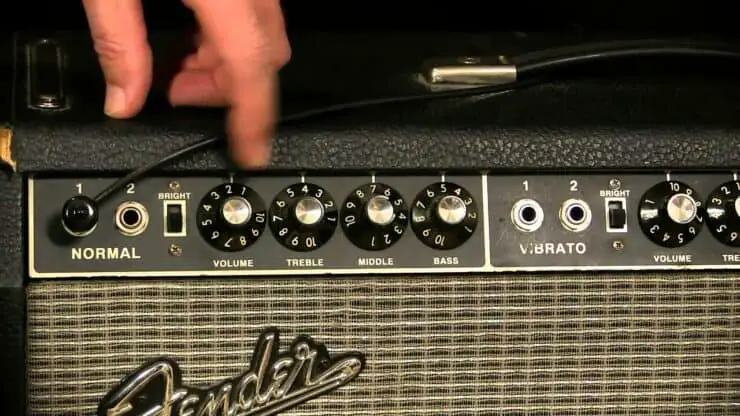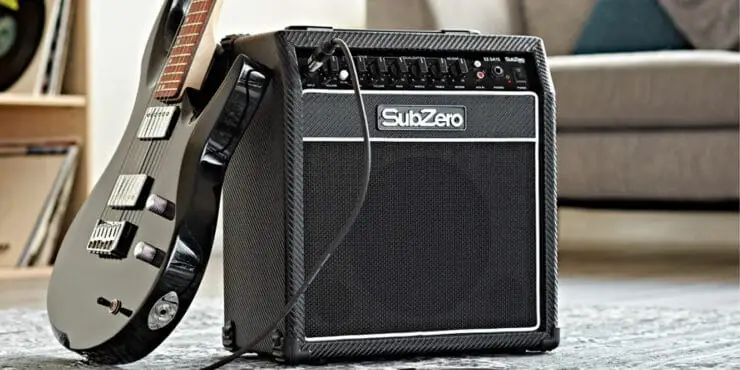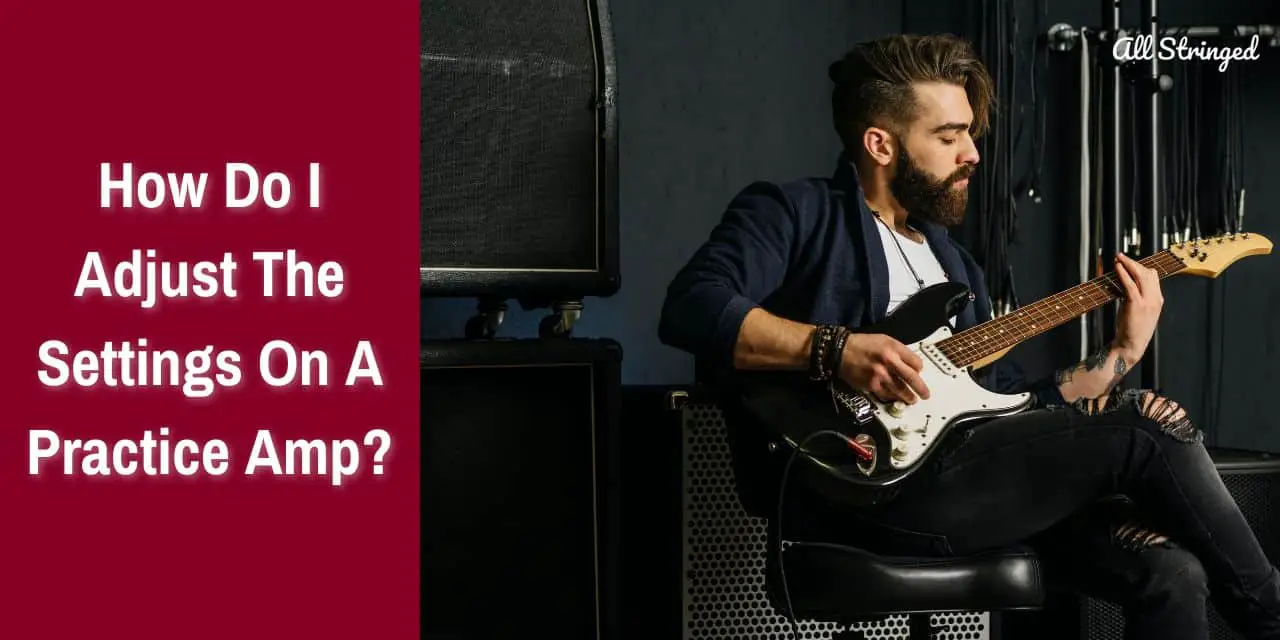As a guitar player, it’s essential to understand how to adjust your practice amp to get the sound you want. Knowing how to operate your amp is essential to getting the most out of your practice sessions and refining your sound. In this article, we’ll explore how to adjust the settings on your practice amp so you can get the sound you’re looking for. Whether you’re a novice or an experienced guitarist, this article is sure to provide insight into how to customize your amp settings to achieve the sound you desire. So, let’s get started!
Overview of practice amp
Practice amps, as the name suggests, are guitar amps that are designed to be used primarily for practice sessions. They’re the smaller and more affordable alternative to full-sized amps that are more commonly used for recording and performances. Practice amps come in a wide variety of sizes, types, and styles, but they all share the same basic features and functionality.
These amps are generally small and compact, which makes them ideal for home use and small rehearsal spaces. They also have lower wattage outputs compared to full-sized amps, ranging from 1W to 30W. This means that they can easily produce lower volume levels, which makes them perfect for practicing without disturbing your roommates or neighbors.
ALSO READ: Best Practice Amp: Top 7 Picks to Play Anywhere!
Practice amps also come with a wide variety of features and effects like distortion, delay, and reverb. These effects can help in creating a wide range of sounds and tones, making your practice sessions more fun and interesting. Some practice amps come with headphone jacks, which allow you to practice silently and without disturbing others around you.

Practice amps are typically designed for practice sessions, but they offer a variety of benefits to guitarists. Here are some of the benefits of practice amps –
#1. Affordable
Practice amps are typically less expensive compared to larger amps, which makes them such a wonderful choice for beginners who are starting to learn how to play the guitar. You can find a decent-quality practice amp for as little as $50, which is a fraction of the cost of a larger amp.
#2. Portability
Practice amps are lightweight and small, which makes them quite easy to carry around. If you have to carry your guitar and amp to gigs or practice sessions, a practice amp will be much easier to transport than a larger amp.
#3. Volume control
Practice amps generally have lower wattage outputs compared to larger amps, which means that you’re able to play at lower volumes without sacrificing tone or clarity. This makes them such a wonderful choice for practicing at home without disturbing your family members or neighbors.
#4. Versatility
Practice amps come with a wide range of features and effects, including delay, reverb, and distortion. These features will allow you to experiment with different sounds and styles, which can help you develop your playing ability and find your own unique sound.
#5. Silent practice
Many practice amps come with a headphone jack, which will allow you to practice silently without disturbing other people. This is especially useful if you live in an apartment or have roommates who might not appreciate the sound of a guitar amp.
#6. A valuable learning tool
A practice amp could be a valuable learning tool, especially for novices and beginners. It will allow you to hear your playing clearly, which can help you in identifying areas that need improvement. With the added effects and features, you’ll be able to experiment with different playing styles and techniques.
#7. Confidence builder
Practice amps can also help you build your confidence as a player. They’ll allow you to hear yourself play more clearly, which can be a major confidence booster. This can be quite helpful if you are starting out and are still nervous about playing in front of others.
Settings on a practice amp
Practice amps are important devices for guitarists who are looking to improve their skills at home or in smaller performance spaces. These devices offer a compact and portable option capable of delivering high-quality sound without the need for a full-sized amplifier. One of the most significant aspects of practice amps is the settings, which can greatly impact sound and performance. There are different settings like gain, volume, tone controls, and effects that you need to know about.
Gain
The gain settings control the amount of distortion or overdrive in your guitar’s sound. It will range from a clean sound to heavy distortion. The gain setting will be important for creating different sounds and tones. For using it effectively, you should begin with a low gain setting and increase it gradually until you get the desired sound. Experiment with different gain settings for finding the sound that best suits your guitar-playing style and the genre of music you’re playing.
Volume
The volume setting will control the loudness of the guitar’s sound. It ranges from quiet to loud. The volume setting will be important for controlling the overall level of the sound. For using it effectively, you should begin with a low-volume setting and then increase it gradually until you achieve the desired level of loudness. You need to be mindful of the surroundings and adjust the volume accordingly so that you don’t disturb others or damage your hearing.
Tone controls
The tone controls include bass, treble, and midrange. They control the frequency range of the guitar’s sound. The bass controls the low frequencies, the midrange controls the middle frequencies, and the trouble controls the high frequencies. For using them effectively, you must adjust each setting individually for finding the sound that best suits the genre of music you’re playing and your playing style. Experiment with different settings for creating different sounds and tones.
Effects
Many practice amps come with built-in effects, such as delay, reverb, and chorus. The effects can greatly enhance your guitar’s sound and create different textures and tones. For using them effectively, experiment with different effects to find the ones that perfectly suit your playing style and the genre of music you’re playing. Be mindful that you don’t overuse effects, as they could often muddy up your sound or make it too busy.

How do I adjust the settings on a practice amp?
One of the biggest advantages of using a practice amp is the wonderful range of features and effects that these devices offer. You will need to adjust the settings by tinkering with the gain, tone controls, and effects to get the most out of your playing. Here is how you can adjust the settings on a practice amp –
Adjusting the gain
The gain control on the practice amp will help determine exactly how much distortion or overdrive is added to your guitar’s signal. A higher gain setting would produce a more distorted sound, whereas a lower gain setting will produce a cleaner sound. It will be important to adjust the gain to suit the genre of music you are playing.
For instance, if you’re playing rock or blues music, you might want to use a higher gain setting for achieving a more distorted sound. Meanwhile, if you are playing jazz or country music, you might want to use a lower gain setting for achieving a cleaner sound.
Adjusting the tone controls
Most practice amps come with different tone controls, which allow you to adjust the bass, treble, and midrange frequencies of the guitar’s signal. The tone controls are generally labeled as “bass”, “treble”, and “mid”.
Adjusting the tone controls can greatly alter the sound of the guitar. For instance, if you want a more mellow sound, you should reduce the treble and increase the bass. If you are looking for a brighter sound, you can increase the treble and reduce the bass.
It’ll be important that you experiment with the tone controls to find the sound that perfectly suits your playing style and the style of music you are playing.
Adjusting the effects
Many practice amps come with built-in effects like delay, reverb, and chorus. These effects will add depth and character to your playing, and they are quite easy to adjust.
The reverb effect, for instance, adds a sense of space to your playing, simulating the sound of playing in a larger room. The delay effect will create an echo effect, which can add a sense of depth and complexity to your playing. The chorus effect will add a subtle doubling effect to your playing, which can make the guitar sound fuller and more vibrant. It will be important to keep on experimenting with the effects to find the one that perfectly suits you. You can also adjust the level of each effect using the controls on the practice amp.
Amp settings for different music genres
Many guitarists just want to jump online and find the perfect amp settings for metal, blues, rock, country, jazz, and other music genres. However, it isn’t that simple. There isn’t a “one size fits all” situation for all amp settings, as there are so many different variables involved. What sounds perfect on one amp for a music genre could sound entirely wrong on another.
Here, you will get to know the different amp settings for different styles of music. However, you should remember that they’re only meant to be used as the starting point. You should experiment further to find the settings that suit you the best.
Start with these settings if you are unsure where to begin, then read the settings for different genres and adjust from there. It involves a lot of trial and error, so you will need to be patient. The more time you give it, the easier it will become. Remember that you should adjust one control at a time and listen carefully to the impact it’ll make on your tone.
Amp settings for rock
It can be hard to pick general settings for rock music as it varies so much and there are many different types of rock. Generally, you’ll want the gain to be around 6 to deliver enough distortion and crunch, but without affecting the clarity. The bass, treble, and mids are usually quite balanced. You will also benefit from a bit of low-level reverb to give your tone more presence.
Amp settings for metal
With heavy metal, you will want the gain to be cranked up pretty high. To compensate for so much distortion, you will want the treble to be moderately high to give you the boost of clarity to overcome the muddiness of the distortion. The mids and bass will have to be fairly balanced, and a bit of reverb will give the tone so much character.
Amp settings for blues
You wouldn’t want the gain to be quite high for blues as you are looking for a more crunchy and saturated tone instead of the distorted one. The mids and treble are rather moderate to give a balanced sound. The bass should not be that high, as you don’t want the tone to have a particularly “boomy” quality. You will typically benefit from some reverb to make the notes stand out a bit more.
Amp settings for country
Ideally, you’ll want to go for a clean tone for country music, so you need to have the gain as low as possible without losing the volume. To give the twangy country tone, you should have the treble moderately high. The sound is generally more scooped with country music instead of other styles, so you should have the mids moderately low and the bass turned down some more.

Tips to consider when using a practice amp
Practice amps are quite helpful if you want a smaller and more portable device for practicing. To get the most out of your practice amp, it’ll be important to set up a practice space and then experiment with different sounds and settings.
Setting up a practice space
The first thing that you should consider when using a practice amp effectively will be to set up a practice space. This can be a dedicated room or simply a corner of your bedroom. Here are the tips to set up the practice space –
#1. Choose a quiet location
Ideally, you will want to practice in a quiet location where you won’t get disturbed. If you reside in a noisy household or apartment building, you should consider using headphones for blocking out the noise.
#2. Set up the equipment
Once you have found a quiet location, you should set up your guitar amp, and other equipment that you’ll be using. You should ensure that you have enough space to move around and adjust the equipment as needed.
#3. Consider lighting
Great lighting will be important for practicing effectively. You should ensure that your practice space is well-lit, so you can see what you’re playing.
Experimenting with different settings
Once you have set up the practice space, it’ll be time to practice with different settings on the practice amp. Here are the tips to get the most out of your practice amp –
#1. Start with the clean channel
Before you start experimenting, you should start with the clean channel on your practice amp. This will give you the baseline sound to work with.
#2. Experiment with the gain
Adjust the gain on the practice amp to find the level of overdrive or distortion that suits your playing style. Start off with a low gain setting and then gradually increase it until you find the sound that you are looking for.
#3. Experiment with tone controls
Experiment with the bass, treble, and midrange controls on your practice amp for finding the sound that best suits your playing style and the genre of music you’re playing.
#4. Try out different effects
Many practice amps come with built-in effects, such as delay, reverb, and chorus. Experiment with these effects for finding the ones that best suit your preferences.
#5. Play around with the strings
You shouldn’t be afraid to play around and experiment with the settings on the practice amp. Try out different combinations of gain, tone controls, and effects for finding the sound that best suits your playing style.
Different types of practice amps to choose from
Practice amps are a popular kind of guitar amps for beginner and expert musicians and guitarists alike. They offer a compact and portable option that can deliver high-quality sound without the need for a full-sized amplifier. These devices will help you improve your skills at home or in smaller performance spaces. Here are the different types of practice amps that you can choose from –
#1. Solid-state amps
Solid-state amps are the most common type of practice guitar amps. They make use of transistors for amplifying the sound and typically offer a wide range of tones, from clean to distorted. Solid-state amps are rather inexpensive, lightweight, and easy to use. They are also durable and need minimal maintenance.
#2. Tube amps
Tube amps are known for their warm and organic sound, which makes them such a popular choice for professional musicians. They use vacuum tubes for amplifying the sound, which produces a more natural and dynamic tone. Tube amps tend to be much more expensive than solid-state amps, but they’re well worth the investment if you are looking for a high-quality sound.
#3. Digital modeling amps
Digital modeling amps make use of digital technology for emulating the sound of different amps and effects. They offer a wide range of tones, from clean to distorted, and they’re designed for replicating the sound of different amp models. These amps are popular for their portability and versatility. They also come with a wide variety of built-in effects like delay, reverb, and chorus.
#4. Hybrid amps
Hybrid amps manage to combine the best of both worlds, using tube and solid-state technology for producing a unique sound. They typically feature a tube preamp and a solid-state power amp, which can produce a warm and dynamic tone. Hybrid amps are an amazing choice for guitarists who are looking for the warmth of a tube amp but do not want to spend a lot of money.
#5. Battery-powered amps
Battery-powered amps are the ideal option for guitarists who are looking for a portable practice solution. They are small, lightweight, and run on batteries, which makes them the perfect option for outdoor rehearsals. Battery-powered amps often come with a limited range of features but they’re also fairly easy to use and need minimal setup.
FAQs
What settings should I adjust when setting up a practice amp?
When setting up a practice amp, it’s important to adjust the settings to get the best sound quality and tone. The main settings to adjust are the volume, tone, and EQ controls. It’s also important to consider the type of guitar and playing style when adjusting the settings.
How do I adjust the volume control on a practice amp?
The volume control on a practice amp is typically located on the front panel or on the side. Adjusting the volume control will affect the overall volume level of the amp. It’s important to adjust the volume so that it’s not too loud or too quiet, as this can affect the sound quality and tone.
What other settings should I adjust on a practice amp?
A: In addition to adjusting the volume, tone, and EQ controls, it’s important to consider the type of guitar and playing style when adjusting the settings on a practice amp. Depending on the type of guitar and playing style, you may need to adjust the gain, presence, master volume, and reverb/delay settings. It’s also a good idea to experiment with different settings to find the best sound for your playing style.



